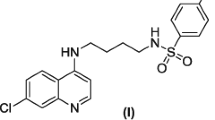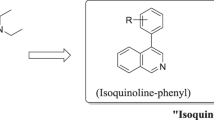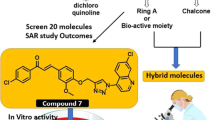Abstract
A NOTEWORTHY feature of the published synthetic work relevant to the chemotherapy of malaria is the extent to which attention has been concentrated on the preparation of active agents derived from either quinoline or acridine, of which the two outstanding examples are respectively, pamaquin and mepacrine. By comparison, little information is available concerning the effectiveness of other structural types, with the important exception of paludrine, the discovery of which was announced recently1.
Similar content being viewed by others
References
Nature, 156, 596 (1945).
J. Gen. Chem. U.S.S.R., 8, 1797 (1938). Chem. Abs., 33, 4993 (1939).
Schönhofer, Z. physiol. Chem., 274, 1 (1942).
Eng. Pat. Appl. 27673/38.
Ann. Trap. Med. and Parisitol., 39, 139 (1945).
Author information
Authors and Affiliations
Rights and permissions
About this article
Cite this article
SIMPSON, J., SCHOFIELD, K. Antimalarial Action of Cinnoline Derivatives. Nature 157, 439–440 (1946). https://doi.org/10.1038/157439c0
Issue Date:
DOI: https://doi.org/10.1038/157439c0
- Springer Nature Limited





